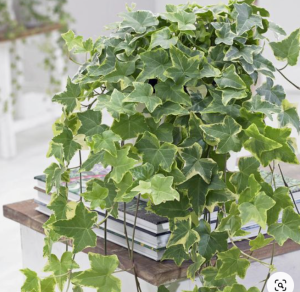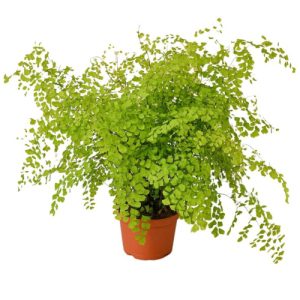Attracting many plant enthusiasts with its unusual form and appealing look, the String of Dolphins plant is a unique succulent plant. Its leaves form like jumping dolphins, as if a bunch of little dolphins swimming on the verdant vines. Being a unique “string” plant, it is not only aesthetically pleasing but also very vibrant and flexible, which makes it perfect for indoor gardens. Knowing its light, temperature, soil and other requirements will enable you to effectively grow a healthy Dolphin String plant during planting and maintenance.

Senecio Mikanoides
Does the Dolphin String poison animals?
Safety concerns surely play a major role in plant selection for households with pets. Though the String of Dolphins looks great, sadly it is poisonous to dogs and cats as well as mildly harmful to people. Thus, it is advisable to introduce the Dolphin String into your house at a high or enclosed space out of reach of youngsters and animals. Among the poisoning symptoms include stomach aches, drooling, skin irritability, weakness, vomiting, diarrhea, and even more severe liver failure. These symptoms seem frightening, but as long as the right steps are followed, unneeded risks may be rather avoidable. Choosing succulents fit for pets, including certain non-toxic species, may be a safer option for pet-friendly homes.
General Maintenance for String of Dolphins
Although the dolphin string plant is really easy to grow and maintain, you still need to know some simple care guidelines to keep it healthy and luxrous. Its development will be much influenced by elements like light, temperature, soil, and waterings.
Requirements for Light
The dolphin string plant is not fit for direct exposure to bright sunshine even if it has some desire for sunlight. Like the pearl spider plant, too much sunshine could produce sunburn on the leaves, therefore losing their luster or maybe displaying burn scars. Consequently, the dolphin string should be positioned in a shady location in the summer or seasons with strong direct sunshine so that it may get indirect or filtered sunlight. A south-facing window is the best location for families that grow dolphin strings as indoor plants to guarantee at least six hours of sunshine every morning. T-5 fluorescent bulbs or LED grow lights may be used to augment the natural light in winter if it is not enough.
Perfect Temp
Unlike other succulents, Dolphin String can withstand temperatures as low as 40 degrees and likes colder air, particularly in the winter. The perfect temperature for Dolphin String throughout the growing season is about 72 degrees, which encourages good development. But Dolphin String is a “soft succulent,” hence it cannot endure really low temperatures. Planting Dolphin String in a container will let you to simply relocate it inside should the winter temperature in your location fall below thirty degrees.
Dirt and Fertilizer
Well-drained soil is very important for Dolphin String plants. Choosing a soil mix fit for succulents—such as cactus or succulent soil—is crucial as over watering may often lead to root rot. Furthermore, pick a flower container with drainage holes at the bottom to stop water from building up at the roots while you plant. Fertilizer is not needed much from Dolphin String, hence overfertilization might lead it to lose its recognizable leaping dolphin look. Usually just once or twice a year in early spring or during blooming, it may get adequate nutrients for its development and prevent the detrimental consequences of overfertilization on the plant.
Needs for Watering
String of Dolphins have quite low water needs as compared to other unusual succulents. Give them a good bath until the water comes out of the drainage holes in the flowerpot, then allow the soil dry completely between waterings. Watering should once a week during the growth season—usually spring to early autumn—while during the winter dormancy period the frequency should be reduced to once a month. The frequency of watering may be flexible depending on the climatic conditions of the area to guarantee the plant gets sufficient moisture and prevent overwatering.
Dormancy Management for Dolphins: String
Winter is the dormant season of the Dolphin String plant; so, particular care should be given to the temperature and water adjustment during this season. The perfect dormant temperature falls between 50 and 55 degrees; so, water should be cut down and once a month is enough. This less water intake keeps the plant healthy and helps to avoid root troubles brought on by too much water. Make sure the ambient temperature is not below forty degrees to avoid cold damage of the plant. Furthermore essential for maintaining the healthy development of the Dolphin String throughout the winter hibernation is moderate ventilation and a dry surroundings.
How to get the String of Dolphins to bloom?
From spring to early summer, the blooms of Dolphin String provide this succulent a special appeal even if their appearance is less striking than that of their leaves. Good dormant period care is crucial if we want to encourage Dolphin String to bloom. From late autumn to early spring, keep the temperature of Dolphin String low—about 59 degrees—by cutting the quantity of watering and fertilizing will help the plant gather enough energy during the dormant time to blossom smoothly during the growth season. Furthermore encouraging the development of flowers is keeping the roots somewhat restricted and giving suitable sunshine exposure.
Method of repotting String of Dolphins?
Dolphins String plants do not need to be often repotted as they flourish in a rather crowded surroundings. Still, repotting every three years or so is quite vital. Apart from giving the plant more expanding room, this helps to eliminate probable root issues during the repotting procedure. Watering the String of Dolphins the day before repotting is advised to help to lessen the stress to the plant during the process. A terracotta pot is a great option when selecting a somewhat bigger new pot as it can soak more water and lower the danger of root rot. To provide adequate aeration and drainage, utilize a well-drained soil mix of 40% coconut coir, 20% perlite, and 15% orchid bark.
First carefully remove the plant from the previous container while repotting, aiming to preserve the root system intact. Sterilized scissors will allow you to cut any decaying or damaged root sections. After that, put the plant in the new pot, load it with the suitable quantity of soil, and softly compress it. At last, water it gently to assist the ground settle and enable the roots to make better touch with the fresh ground. After repotting, the String of Dolphins sometimes requires some time to adjust to the new surroundings; hence, lower the frequency of watering during this period and try to prevent high light exposure to stress the plant.

String of Dolphins
Apart from its distinctive look, the Dolphin String plant is a great option for both indoor and outdoor gardening because of its cold tolerance and flexibility. You may quickly design a green “Dolphin Paradise” at home by perfecting the right light, temperature, soil and watering methods. Simultaneously, consider its harm to people and animals and make sure the planting procedure follows required safety precautions. The String of Dolphins will not only flourish but also provide more vitality and beauty to your living environment with correct care.
Post time: 08-31-2024




